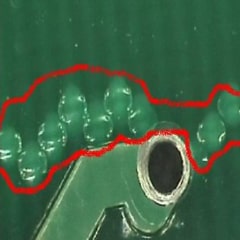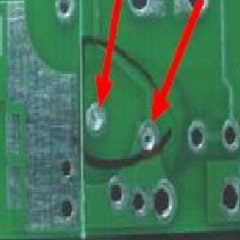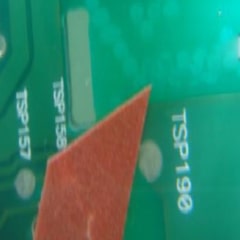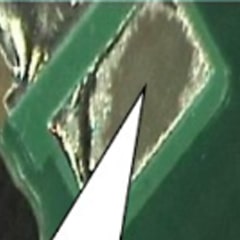 |
Problem Description: Too much moisture in the board. Accepted standards: Not accepted |
 |
Problem Description: Insufficient air knife pressure or foreign matter in the hole causes tin plug hole Accepted standards: 1. Component holes are not acceptable; 2. SMT BGA vias are not acceptable; 3. Via plugs at other locations are acceptable if they are not higher than the pads. |
 |
Problem Description: White spots on the board surface may occur due to tin spraying hitting the board, multiple rework or excessive temperature. Accepted standards: 1. The wire spacing is not lower than the minimum wire spacing value; 2. The distance between white spots does not exceed 50% of the distance between the conductive patterns of adjacent non-commonly connected circuits; 3. The white spots on the edge of the board will not reduce the minimum distance between the edge of the board and the conductive pattern; if not specified, it shall not be greater than 2.5MM; 4. The simulated thermal test is not expanded. |
 |
Problem Description:Excessive micro-etching may be caused by too much micro-etching, too many times of tin spraying rework or too slow micro-etching speed. Accepted standards: Not accepted |
 |
Problem Description: The tin spray air knife is scratched or the employee's improper operation causes scratches. Accepted standards: The abrasion area should be within 6.35mm*6.35mm, and there should be no more than 3-5 scratches on the same side. |
After each part is precisely placed, the real magic happens as boards pass through our reflow ovens. With POE’s advanced temperature profiling and nitrogen‑enhanced atmosphere, we eliminate oxidation and deliver solder joints that stand up to the toughest conditions.#PCBAssembly pic.twitter.com/6jS8zrQjI6
— POE PCB/PCBA Manufacturer (@poe_pcba) April 21, 2025

Since 1996, POE has become a globally renowned PCB company, providing small to medium volume PCB/ PCBA manufacturing services.













